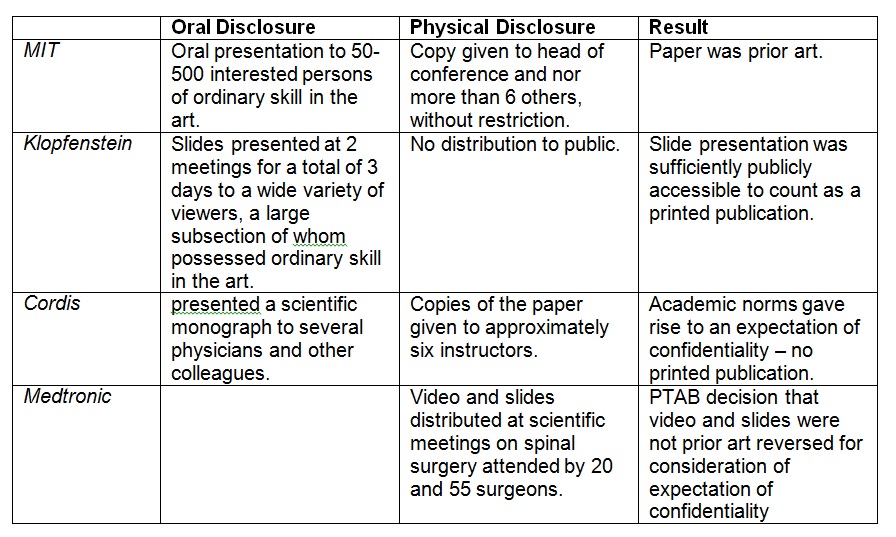July 30, 2018
Materials Available Online, Identified in Federal Register Before the Critical Date Were Printed Publications
In Jazz Pharmaceuticals, Inc. v. Amneal Pharmaceuticals, LLC, [2017-1671, 2017-1673, 2017-1674, 2017-1675, 2017-1676, 2017-1677, 2017-2075] (July 13, 2018), the Federal Circuit affirmed the PTAB decision that claims of U.S. Patent Nos. 7,668,730, 7,765,106, 7,765,107, 7,895,059, 8,589,182, 8,457,988, and 8,731,963 on a drug distribution system for tracking prescriptions of a “sensitive drug” were invalid for obviousness.
The Board’s obviousness determination relied upon certain materials from the regulatory review process, and the primary issue on appeal was whether these materials were sufficiently accessible to the public to constitute prior art. The Board determined that the materials were publicly accessible on an FDA website more than two months prior to the critical date. The Board found that a person of ordinary skill in the art “would have been familiar with the Federal Register and motivated to look for notices related to drug distribution, safety, or abuse prevention,” and that a skilled artisan would have known that Xyrem® contained a “sensitive drug,” providing a person of ordinary skill with “sufficient motivation to have located the Federal Register Notice and FDA web-site. Such a person would have been capable of finding the Notice and following the links to the materials in the Notice.
The Federal Circuit said that a reference is considered publicly accessible upon a satisfactory showing that such document has been disseminated or otherwise made available to the extent that persons interested and ordinarily skilled in the subject matter or art, exercising reasonable diligence, can locate it. If accessibility is proved, there is no requirement to show that particular members of the public actually received the information.
The Federal Circuit agreed with Amneal that substantial evidence supports the Board’s finding that the materials were publicly accessible. The Federal Circuit examined the public notices, and observed that this is not the first time it has considered whether materials disclosed in association with meetings or conferences were “printed publications,” citing MIT, Klopfenstein, Cordis, and Medtronic.

Comparing the facts of the present case to those in MIT, Klopfenstein, and Medtronic confirmed that the materials were disseminated more broadly and for a longer duration to persons of ordinary skill than the materials disclosed at individual meetings in those cases. In addition, unlike in Cordis, disclosure through public domain sources such as the Federal Register and a public federal agency website plainly indicates that there was no reasonable expectation that the materials would remain confidential.
The Federal Circuit found that:
- The breadth of the dissemination here to persons of ordinary skill was significant
- The materials were available online for a substantial time before the critical date
- The materials were distributed via public domain sources with no possible expectation that the materials would remain confidential or not be copied
The Federal Circuit said that indexing or searchability is unnecessary for a reference to be a printed publication under § 102(b), although it noted that the Federal Register was meaningfully indexed. However, the Federal Circuit cautioned that it was not applying per se rule that every notice in the Federal Register satisfies the requirements for prior art, nor was it endorsing a rule that would supplant the case-by-case inquiry consistently applied throughout our case law. The Federal Circuit did reiterate that if accessibility is proved, there is no requirement to show that particular members of the public actually received the information.
The Federal Circuit went on to affirm the Board’s claim construction and ultimate conclusion of obviousness.

































